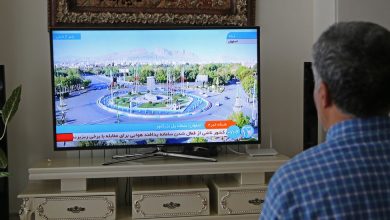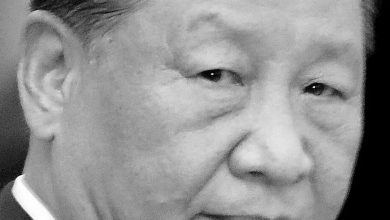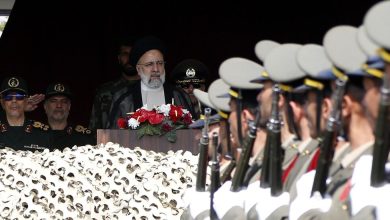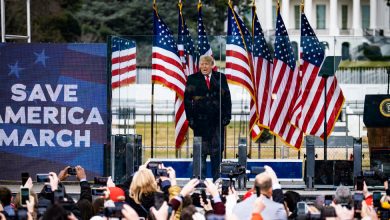Ukraine Observes Independence Day With Subdued Celebrations
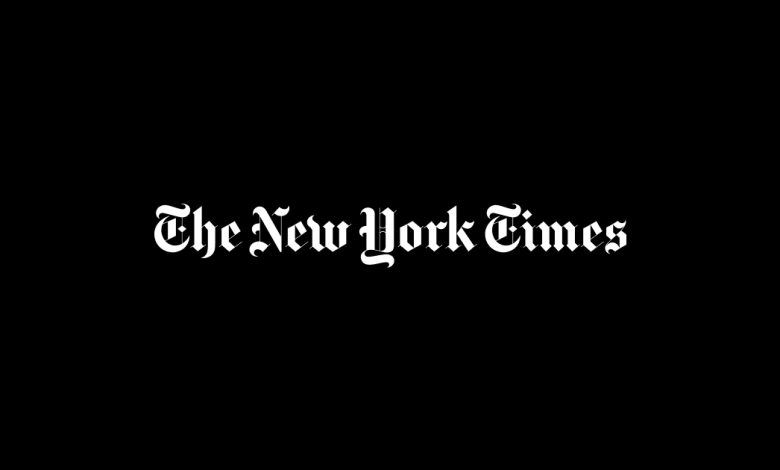
Ukraine is observing its second wartime Independence Day by displaying the carcasses of destroyed Russian military equipment along a central avenue in Kyiv, giving residents a firsthand glimpse at the country’s struggle to defend itself from Russia’s invasion.
There will be no parades or other major events. The authorities have announced that the national holiday on Thursday — which also comes 18 months after the full-scale invasion of Ukraine began — won’t include public celebrations amid concerns that Russia could launch huge strikes to spoil the occasion.
“I urge all Kyiv residents and guests of the capital to be as attentive and cautious as possible these days and not to neglect the air-raid warnings,” Vitali Klitschko, the mayor of Kyiv, the capital, said on Monday.
Independence Day in Ukraine commemorates the country’s 1991 break from the Soviet Union, but also increasingly serves as a rallying point for Ukrainians to assert their identity and aspirations.
“People are honoring 1991 not so much for what happened then as for what it represents today,” said Roman Szporluk, a professor emeritus of Ukrainian history at Harvard. “It stands for independence, democracy, Europe, the West.”
Last year, as mass gatherings were also banned, Ukrainians similarly took the opportunity to show defiance against Moscow, with President Volodymyr Zelensky of Ukraine delivering a speech in front of another lineup of destroyed tanks in Kyiv.
The holiday symbolizes liberation after a long history of what many in Ukraine consider subjugation to Moscow.
Ukraine declared independence on Aug. 24, 1991, a few days after communist hard-liners tried to depose the Soviet leader Mikhail Gorbachev and reverse his efforts to liberalize the Soviet Union. Although the coup failed, it raised fears in Soviet republics such as Ukraine that were gradually getting out from under Moscow’s yoke.
An overwhelming majority of members of the Ukrainian Parliament adopted a declaration of independence, noting “the mortal danger hanging over Ukraine in connection with the coup d’état.”
Outside Parliament, jubilant crowds celebrated the declaration, waving Ukraine’s blue-and-yellow flag and flashing three-finger signs standing for the fork, the emblem of the country. Independence was then approved by more than 90 percent of Ukrainian voters in a referendum organized in December 1991.
Ukraine had already proclaimed independence from the Russian Empire in 1918, in the chaos of the Russian Revolution. But the new Ukrainian republic lasted only a few years, until 1921, when the Lenin-led Bolsheviks took control over much of its territory.
The 1991 declaration of independence helped spell the end of the Soviet Union, and opened a new era for Ukraine as it tried to chart its own course after centuries of domination by foreign powers.
Celebrations of Independence Day have often featured military parades and festive crowds wearing vyshyvankas, the traditional Ukrainian embroidered shirts. But Mr. Szporluk, the historian, said that Ukrainians see Independence Day not so much as a day of remembrance as one to reassert their commitment to democracy and sovereignty.
“People have projected their values and aspirations on that memory,” Mr. Szporluk said. Pointing to the citizens’ uprisings of 2004 and 2014, in which hundreds of thousands of people protested to call for free elections and a rapprochement with Europe, he said that Ukrainians had never treated independence as a given.
On Wednesday, Mr. Zelensky took part in a ceremony on the occasion of the Day of the National Flag, which precedes Independence Day. Speaking near a giant Ukrainian flag covered with words of soldiers from the front, he said that “the time will come when our entire free and peaceful Ukraine will be able to see this special flag.”

